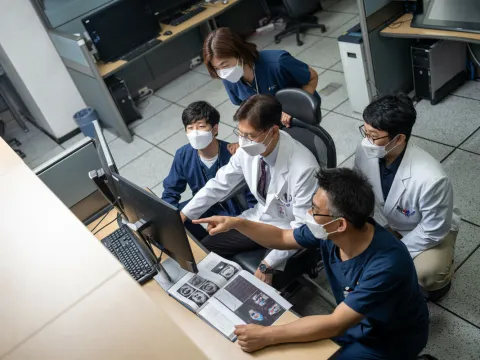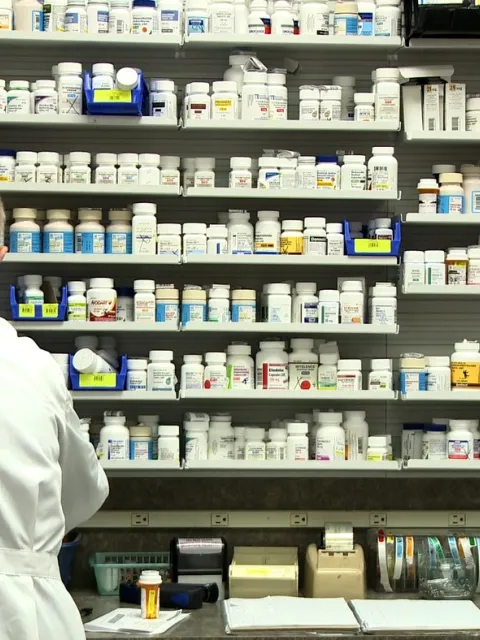Anti-microbial resistance in Asia: a clear and present danger
The threat of anti-microbial resistance (AMR) is listed as a top global health threat along with climate change, which has been shown to worsen the effects of AMR.

Photo taken in Seoul at the National Cancer Center Korea during a UICC photo mission.
AMR occurs when bacteria, viruses, parasites and fungi develop resistance to medicines, such as antibiotics, used to treat the infections that microbes cause. As these antimicrobial medicines are becoming increasingly ineffective, individuals experience more severe illnesses, longer treatments and sometimes even death.
Based on 2019 figures, AMR accounts for nearly 1.3 million deaths per year worldwide. The situation is particularly severe in Asia, and could result in over five million deaths in the Western Pacific region alone between now and 2030. The countries in the region, with a combined population of nearly two billion, also face significant financial costs due to lost productivity and healthcare expenditures, prolonged hospitalisations and more expensive treatments, estimated at USD 148 billion.
Two bacteria, E. coli and methicillin-resistant staphylococcus aureus (MRSA) or ‘golden staph’, are predicted to be responsible for more than 80% of these deaths – over four million people – as treatment with standard antibiotics does not always work. The range of issues and challenges that are leading to the rise in AMR in Asia are widespread. They include poor infrastructure, lack of training of health workers on good prescribing practices and the misuse and overuse of antibiotics. This includes unregulated sales and over-the-counter availability, self-medication, substandard and falsified medicines, writing prescriptions when not required, and the use in livestock and agriculture.
In India, “the convergence of factors such as poor public health infrastructure, rising incomes, a high burden of disease, and cheap, unregulated sales of antibiotics has created ideal conditions for a rapid rise in resistant infections". (‘Antibiotic Resistance in India: Drivers and Opportunities for Action’, PLoS Med, 2016), Indonesia, for example, also suffers from high levels of AMR due to irrational use of antibiotics in human and animal health. A study showed that about 10% of communities kept antibiotics in their homes, and 86.1% got these medicines without a prescription from a doctor (REF - Antimicrobial Resistance Situation in Indonesia: A Challenge of Multisector and Global Coordination - PMC (nih.gov).
Wastewater treatment plants across the Western Pacific and Southeast Asia have also been found to contain significant traces of antibiotics, making them potential 'hotspots' for the emergence of drug-resistant infections.
AMR and cancer care
A key area affected by the rise in AMR is cancer treatment. People living with cancer often have compromised immune systems due to the cancer itself or its treatment and are therefore particularly susceptible to infections. Infection is, in fact, one of the most common health complications for cancer patients, who are three times more likely to die from infection than those without cancer.
If prophylactic antibiotics – those given to patients before surgical procedures or to those with significantly weakened immune systems – become less reliable, surgical interventions, chemotherapy and novel treatments such as immunotherapy might be less effective in the presence of drug-resistant infections.
Already, AMR is the leading cause of hospitalisation for one-fifth of all cancer patients undergoing treatment, with infections contributing to half of all deaths in blood cancer patients.
In India, a study in a tertiary care hospital showed that about 73% of patients with blood cancers were colonised with carbapenem-resistant bacteria in the gut (REF - Rectal Carriage of Carbapenem-Resistant Enterobacteriaceae: A Menace to Highly Vulnerable Patients - PMC (nih.gov)).
Addressing the crisis
According to the O'Neill Review, a report by former Goldman Sachs chief economist Jim O’Neill, who was appointed in 2014 by the UK government to develop a strategy to address AMR, it would cost USD 40 billion over ten years to mitigate the threat of drug resistance. This is significantly cheaper than the anticipated cost of unchecked AMR.
The strategy outlines several recommendations, which are also reflected in the global action plan on antimicrobial resistance adopted by the World Health Assembly in 2015:
- Reduce the use of antibiotics in humans and animals through public education campaigns and healthcare professional training
- Limit the use of antibiotics in livestock
- Improve hygiene and prevent the spread of infection (Infection Prevention and Control or IPC)
- Develop new diagnostic tools to reduce the unnecessary use of antibiotics
- Invest in research and development of new antibiotics and alternative treatments
- Encourage the development of new vaccines and alternative treatments
The first essential step is to address the lack of high-quality data on the extent of AMR, a gap which countries in Asia are working to fill. Many of them have developed national action plans to address AMR – however, the challenge is implementation and adequate funding towards sustained action.
Researchers and pharmaceutical companies, for their part, are focusing on the development of new antibiotics and alternative treatments. As of the latest WHO report, however, only six antibiotics out of the 27 currently being tested against critical bacteria requiring urgent new treatments are considered innovative enough to overcome antibiotic resistance; among these, just two have the capability to target highly drug-resistant forms of these bacteria.
Rapid diagnostics are also being used to identify bacterial infections and their antibiotic susceptibility, which can help to ensure that antibiotics are only used when necessary and that the most effective drug is chosen.
This range of approaches shows that a comprehensive, multifaceted strategy combining policy changes, scientific innovation and public education is necessary to mitigate the impacts of AMR, engage policymakers, researchers, cancer and non-communicable disease organisations, infectious diseases groups and other relevant stakeholders.
Addressing AMR is not only a matter of global health but investing now in interventions that mitigate the impacts of AMR will save on future healthcare costs and protect the workforce and economies.
Last update
Thursday 17 August 2023
